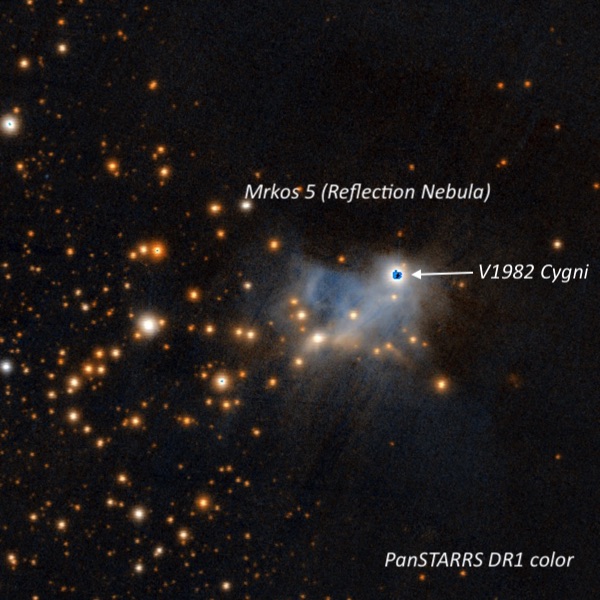OK, you’ve probably heard about the daytime heat at the star party, the various ways folks avoided the heat, the meals at Chez Dan, the fallen tree trunk, the socializing and reuniting with old friends. Oh, did I mention the heat? But I’m just going to focus on observing – which was excellent at times, particularly after midnight, with SQM readings approaching 21.7. As an example, the gegenschein was an obvious oval just south of the Pisces Circlet . After 27 years viewing with 17.5-inch and 18-inch scopes, I finally have moved on up to a 24-inch f/3.7 Starstructure just a few months ago and observing has taken on a new excitement again. I enjoy tracking down little-known objects, particularly if they’re of special interest astrophysically, so here’s a small selection of the 125 or so objects I logged over the 3 nights at CalStar.
1) Globular cluster in the Wolf-Lundmark-Melotte (WLM) galaxy
| RA | 00 01 56.9 |
| Dec | -15 27 01 |
This low surface brightness Local Group dwarf irregular galaxy (distance ~3 million light years) was discovered photographically by Max Wolf in 1908 though first classified as a galaxy by Lundmark and Melotte in 1926. As a result, all three astronomers have their names attached to the galaxy. This is a pretty tough object, just a dim, unconcentrated glow, spread out over 11’x4’ in a north-south orientation. After the galaxy was identified I also picked off (barely) its brightest globular cluster – just a 16th magnitude speck off the west side of the galaxy. A photographic finder chart helps, as there is a much easier mag 14.5 star just 38” N that you don’t want to confuse it with.
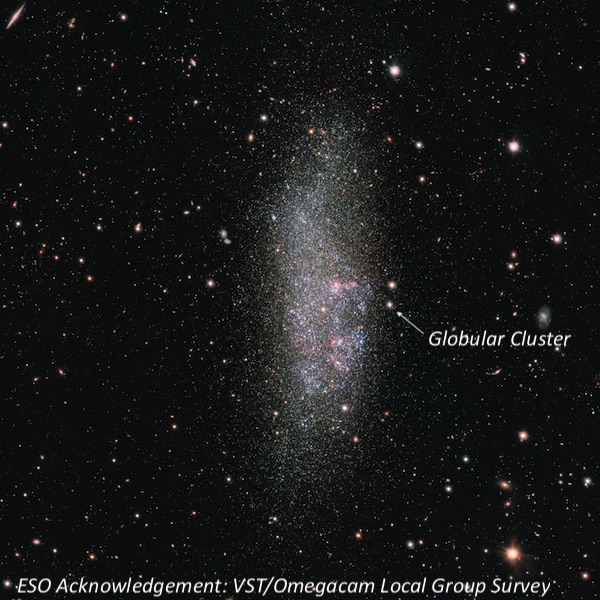
2) Globular cluster FJJ NGC 185 V (or Hodge 5)
| RA | 00 38 57.2 |
| Dec | +48 20 15 |
NGC 185 is a dwarf elliptical galaxy and a satellite member of the M31 group. Although I’ve viewed the galaxy a number of times, my target was FJJ NGC 185 V, the brightest of a handful of globular clusters in the galaxy, which were discovered by William Baade in 1944. A finder chart is definitely necessary here to identify a very dim V = 16.7 “star”, 3.8’ NE of the center of NGC 185. Fortunately, it forms a “triple star” with two mag 14.5 and 15 stars, so it was easy to pin down the location. Still this globular was a fairly tough object, even in my 24”.
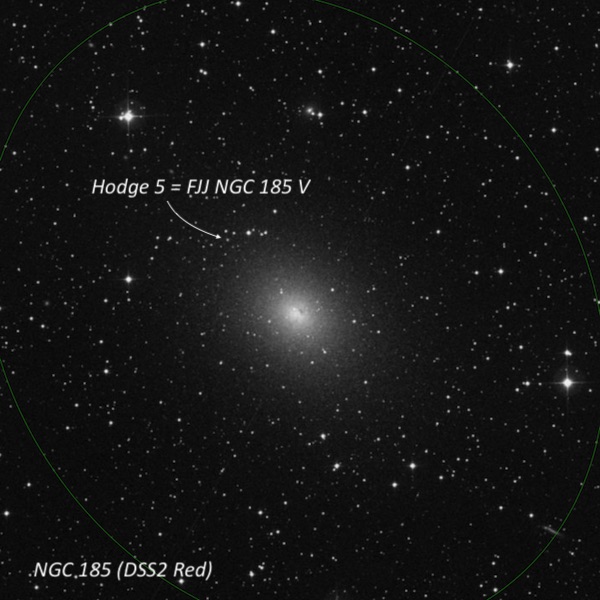
3) Kohoutek 1-16 and KUV 18217+6419
| RA | 18 21 52.2 |
| Dec | +64 21 54 |
K 1-16 is a very challenging, low surface brightness planetary, visible at 125x using an OIII filter as a dim, irregular glow, ~60” diameter with a mag 13.3 star just off the east edge. Only the portion of the rim on the northwest side was seen as an arc, as the low surface brightness glow generally did not have a definitive edge. By a cosmic coincidence, KUV 18217+6419 is a 14th magnitude quasar just off the southeast side, 1.4’ from center. This is a pretty cool juxtaposition – the light from the distant quasar (z = .30) just arrived after speeding along for 3.4 billion years while the planetary is relatively nearby!
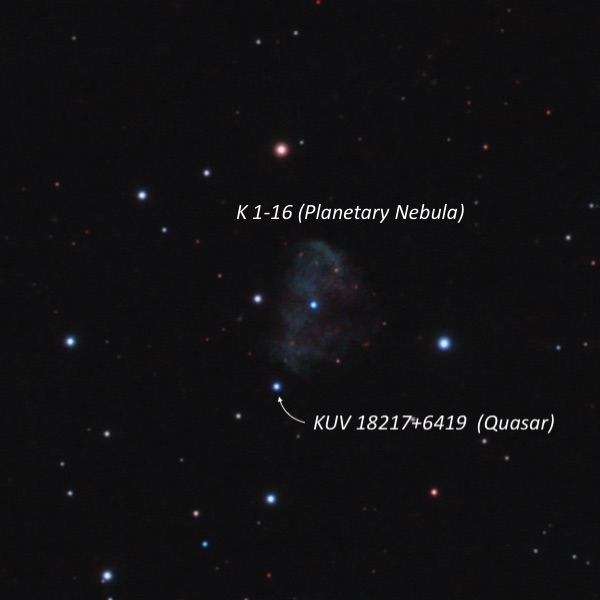
4) Sharpless 2-91
| 9 Cyg filament | ϕ Cyg filament | |
|---|---|---|
| RA | 19 32 42 | 19 39 42 |
| Dec | +29 36 | +29 57 |
The little-known Sharpless HII region in Cygnus is virtually unknown among amateurs but is one of just a handful of visible supernova remnants. Sh 2-91 is part of a huge shell discovered in 1997 during an emission line survey of the galactic plane. The entire shell is as large as the Veil Nebula, spanning 4 degrees x 3.3 degrees, though only the brightest individual filaments are visual targets. One of my favorite “obscure” summer objects is a long, narrow, faint filament that stretches 14’ southwest to northeast, and situated just 15’ south of mag 4.7 Phi Cygni. At CalStar, I also tracked down another long filament northwest of 9 Cygni, which is not plotted on any atlas. Using 125x with an OIII filter, a huge filament stretched at least 30’ east-west across much of the field in my 21mm Ethos. The filament tapered at the east end and fanned out on the west end. The location of this glowing thread is 1° SSW of Campbell’s Hydrogen Star – my next target.

5) Campbell's Hydrogen Star (BD+30 3639)
| RA | 19 34 45.2 |
| Dec | +30 30 59 |
Another one of my favorite summer objects, as it’s one of only two
planetary nebulae (along with

6) GM 2-39
| RA | 20 17 08.2 |
| Dec | +38 59 29 |
Armenian astronomers Armen Gyulbudaghian and Tigran Yu Magakian discovered this “Young Stellar Object” (emission-line star) and surrounding reflection nebula in 1977 and included it in a list of “New red objects resembling Herbig-Haro objects”. You certainly won’t find it plotted on any star atlases, but it was easily picked up at 200x as a diffuse glow surrounding a very faint “star”. A north-south chain of mag 12-14 stars is off the east side. At 325x the nebula appeared slightly elongated 5:4 N-S, ~20”x16”. The young illuminating source was visible most of the time and was possibly slightly nonstellar. This obscure object resides just 1.2° northeast of NGC 6888 (Crescent Nebula), another summer/fall all-time favorite!
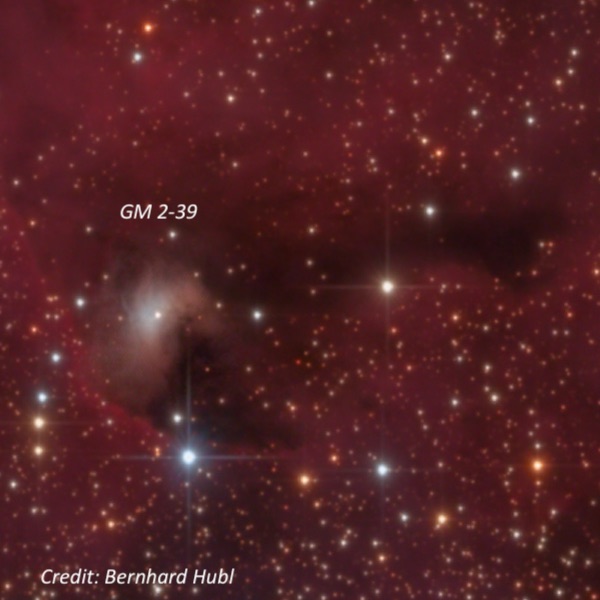
7) Sharpless 2-106
| RA | 20 27 26.9 |
| Dec | +37 23 49 |
Ever since I saw images of this amazing bipolar emission nebula, I’ve wanted to observe it. Infrared images reveal a stellar nursery obscured by dust with sweeping side wings that look similar to the Orion nebula! Unfortunately, because of interstellar extinction this nebula is very red and a difficult visual target. A previous attempt with my 18” Starmaster resulted in just a marginal sighting. But it was fairly easy to pick up at 175x unfiltered and was seen immediately as a small, slightly elongated glow SSW-NNE, perhaps ~25”x18”, situated close east-southeast of a mag 10.4 star. With averted vision, the lobe increased a bit in size to 30”-35”, though the fainter northern lobe was not seen. Sh 2-106 is certainly not an exciting object visually, but I was thrilled to pick up this challenging object.
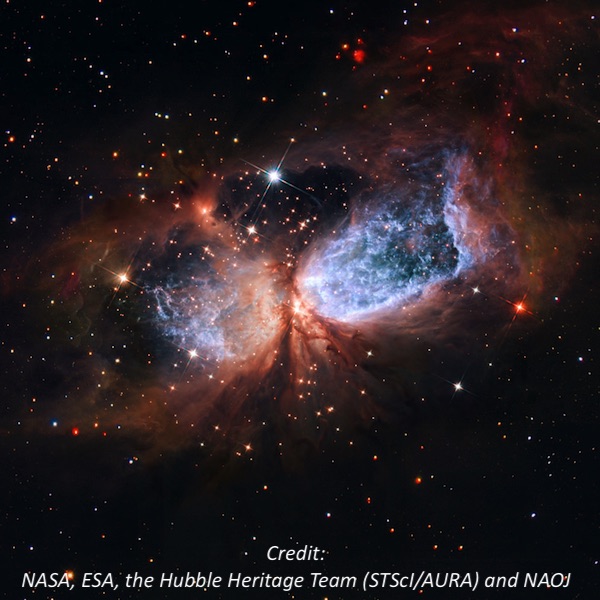
8) Mrkos 5 =
| RA | 21 03 56 |
| Dec | +50 14 54 |
Haven’t heard of this object, you say? It was discovered by Czech astronomer Antonin Mrkos at the Skalnate Pleso Observatory before 1950 and reported in his paper “Six New Bright Diffuse Galactic Nebulae”. Mark Wagner tracked down this obscure “cometary nebula” in 2010 at Bumpass Hell parking lot in Lassen and I was hooked. In the 24-inch, a faint glow was easily visible with the young star V1982 Cyg at the northwest edge. The patch is irregular, but extended WNW-ESE, roughly 1.0’x0.8’. Even more exotic, the pre-main sequence star LKHa 324SE was just visible at the southeast end using 325x. This is an interesting region; to the west is dark nebula LDN 988, part of the Cyg OB7 molecular cloud, and LBN 408, a faint glow surrounding a mag 10 star, was alsoeasy to identify.
